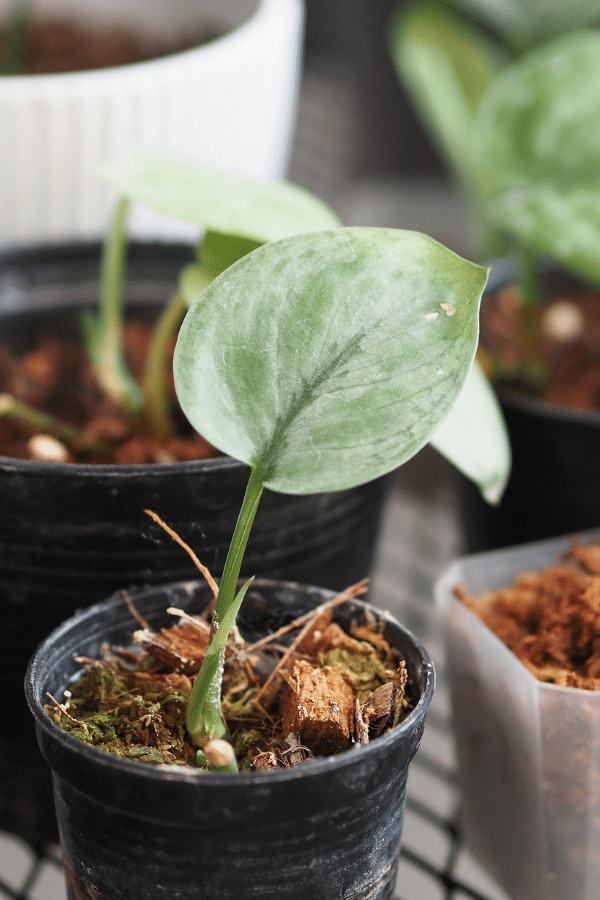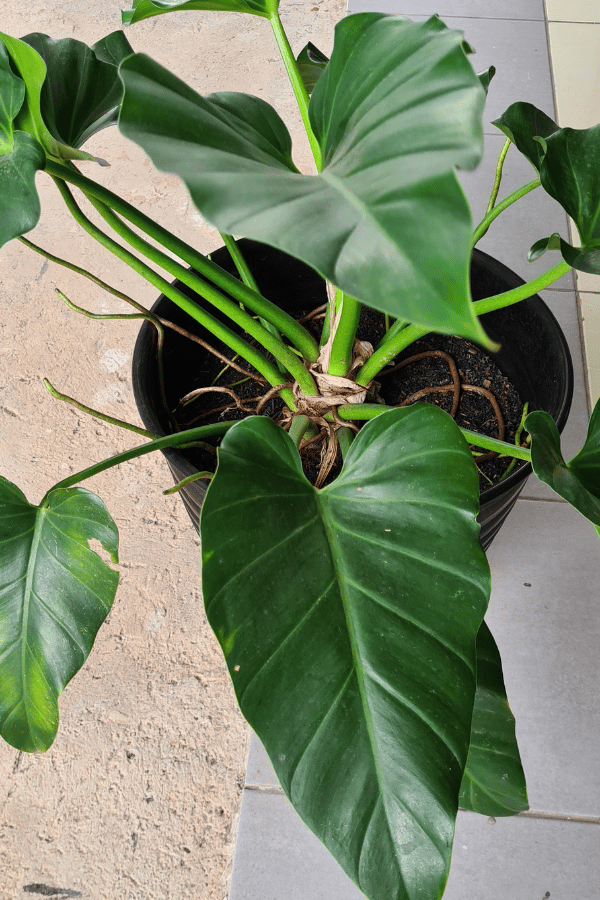How & When to Repot Pothos
If you’re reading this article, it may be time to repot your pothos plants! Since pothos are very hardy houseplants, they don’t need to be repotted often, but it’s beneficial to get the roots some fresh soil with some good nutrients every now and then. In this article, we’ll go over when to repot pothos, how often to repot pothos, and a general guide of how to repot pothos.
When to Repot Pothos
After knowing that your pothos needs a new pot, your first question might be when do I repot? Repotting in the morning versus the evening will be beneficial, as the plant can adjust to its new home with fresh soil while the sun is out instead of repotting in the evening and having it adjust to its new home with zero sunlight. The best season to repot your pothos will be in spring or summer as this is when the plant has the most energy and is putting out new growth, so it will adjust quicker than if it was to get repotted in the wintertime.
How Often to Repot Pothos
A general rule of thumb on how often to repot pothos, Epipremnum Aureum, is once every two years. Of course, this depends on a few things, such as how fast the plant has grown, the health of the plant, and the current size of the pot it’s in.
If the plant is growing really fast, it still shouldn’t need to be repotted more than once every two years.
If the plant looks unhealthy or has a disease, such as a fungal infection or root rot, always treat the pothos and trim away any damaged leaves then repot as soon as possible.
Another thing to note on repotting pothos is to only ever repot one size up, such as a 4″ pot to a 6″ pot, a 6″ pot to an 8″ pot, and so on. For example, if you have propagated a pothos and once roots are developed, you planted it into a 4″ pot and it’s growing like crazy and outgrows the pot, the next year you can pot one size up to a 6″ pot.
Remember that repotting pothos causes a little stress on the plant, so after repotting it is crucial to give it water and optimal growing conditions, such as bright light, warm temperatures, and an average to high humidity level.

Why Repotting Pothos Is Beneficial
Repotting pothos plants is essential to promote their growth and overall health. Here are some of the benefits of repotting pothos:
- Provides More Space for Root Growth: Over time, the roots of your pothos plant will outgrow its current pot, making it essential to move it into a larger container. Repotting gives the roots more space to grow and expand, allowing the plant to absorb more nutrients and water from the soil.
- Refreshes the Soil: Repotting your pothos plant allows you to refresh the soil with fresh potting mix. Over time, the soil can become compacted and lose its nutrients, making it difficult for the plant to grow. By using fresh potting mix, you provide your pothos plant with the essential nutrients it needs to thrive.
- Helps Prevent Diseases and Pests: Pests and diseases can be more prevalent in older soil. By repotting with fresh soil and cleaning the roots, you can help prevent pests and diseases from affecting your plant.
- Promotes Healthy Growth: Repotting your pothos plant can help promote healthy growth by providing it with the space and nutrients it needs. As the plant grows and expands its roots, it will absorb more nutrients, leading to more substantial foliage and a healthier plant overall.
In summary, repotting your pothos plant promotes healthy growth and overall health. It provides more space for root growth, refreshes the soil, helps prevent diseases and pests, and promotes healthy growth. By repotting your pothos plant regularly, you can ensure that it continues to thrive for years to come.
How to Repot Pothos
Once you know that it’s time to repot your pothos, here are the steps to actually repot your pothos.
Check the Roots
Before repotting your pothos houseplant, gently remove it from its current pot and check the roots for any signs of root-bound, which is when the roots have grown too large for the pot and they are just circling the bottom of the root ball. If the roots are coiled around the edge of the pot or have grown through the drainage holes, it’s time to repot.
Prune the Plant
If your pothos plant has become leggy or overgrown or has dead, damaged, or yellow leaves, now is the time to prune it back for new healthy growth. Use sterilized pruning shears to remove any dead or yellowing leaves, stems, or vines and to prune it how you want it to grow.
Select a New Pot
Choose a pot that is one size larger than the current pot, such as if it’s currently potted in a 4″ pot, repot pothos into a 6″ pot. Always use a pot with drainage holes which allows for proper drainage and prevents water from accumulating at the bottom of the pot. Regarding material, a clay or terracotta will be your best bet for pothos plants.
Prepare a Fresh Well-Draining Mix
Mix fresh potting soil with peat moss or coco coir, perlite or sand, and bark to create a well-draining soil mix that allows for proper airflow and drainage. You can also add some organic fertilizer to the mix to provide your pothos plant with essential nutrients.
Remove the Plant from Current Pot and Remove Soil
Gently remove the plant from the old pot and remove any excess soil around the roots. Be careful not to damage the roots while removing old soil.
Remove Mushy Roots (If Needed)
If you notice any mushy or rotten roots, use sterilized scissors, you can dip them into isopropyl alcohol to sterilize them and remove the mushy roots. This helps prevent any potential diseases from spreading to healthy roots. Removing roots will not cause any harm to the plant.
Plant Pothos In New Pot
Add the new soil to the new pot and create a well. Place the pothos plant in the new pot, and add more soil around the roots, ensuring that the plant is at the same depth as it was in its previous pot. Gently tap the pot onto the ground or any hard surface to remove any air pockets.
Water Pothos
After repotting pothos, always water thoroughly, allowing the water to drain out of the pot’s drainage holes. This gives it a nice drink of water after going through some stress of repotting.
Propagate Any Healthy Cuttings
If you pruned your plant back in the steps above and you have healthy cuttings with a node and a few leaves, don’t throw them away! Instead, you can propagate them and turn them into new plant babies. Here’s how:
- Select a Healthy Cutting: Choose a vine cutting that is at least four inches long and has two leaves. Make sure the cutting is healthy, with no signs of disease or pests.
- Place the Cutting in Water: Place the cutting in a container of water, making sure that the node (the area where the leaves attach to the stem) is submerged in the water. Change the water every so often to prevent the growth of bacteria and algae.
- Wait for Roots to Grow: In about four to six weeks, you should notice roots growing from the node submerged in water. Once the roots are at least an inch long, you can plant the cutting in soil.
- Plant the Cutting in Soil: Fill a small pot with drainage holes, with fresh potting mix. Remove the cutting from the water, and put it in the pot with fresh soil, making sure that the roots are covered with soil. Water the plant thoroughly and place it in a bright but indirect light.
- Care for Your New Plant Baby: Your new pothos plant will need regular care and attention to help it grow and thrive. Water it when the top inch of soil feels dry, and fertilize it every four to six weeks during the growing season. Make sure to keep it in indirect sunlight and away from direct sunlight and drafts for optimal growing conditions.
And that is how to repot pothos!






